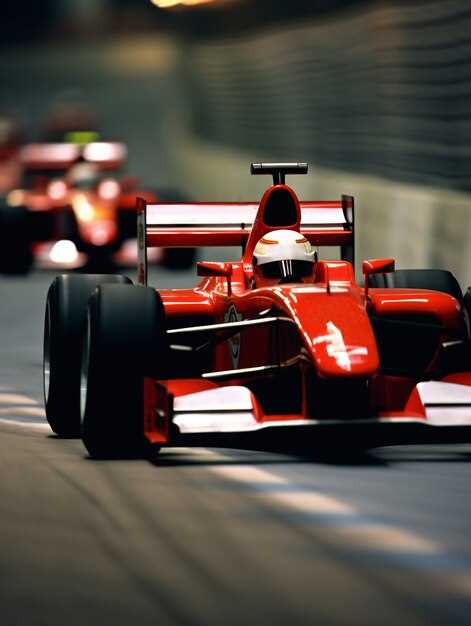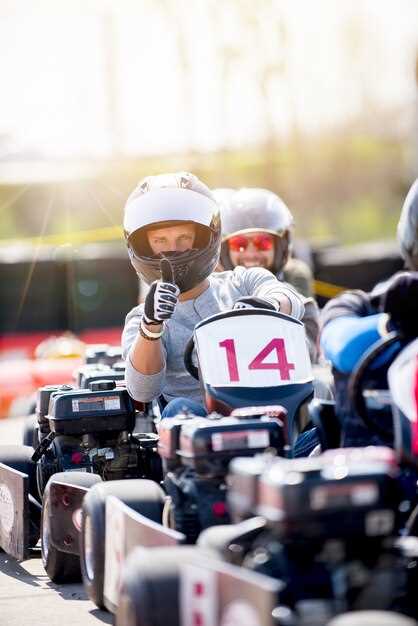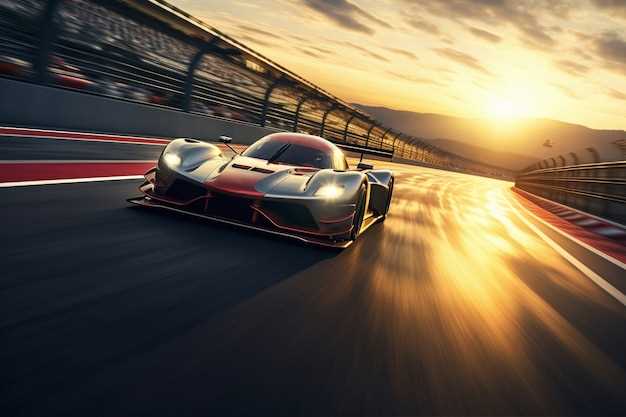
The world of motorsport has witnessed a variety of racing formats, but few have garnered as much enduring appeal as touring car championships. The roots of touring car racing can be traced back to the early 20th century, when manufacturers began to showcase their production vehicles not merely as modes of transportation but as symbols of speed, power, and engineering prowess. This legacy set the stage for a competitive landscape where both brands and drivers could prove their mettle on the track.
As the decades passed, the concept of touring car racing evolved, reflecting changes in technology, regulations, and consumer interest. By the mid-20th century, dedicated championships began to emerge, drawing participation from not only local drivers but also international teams eager to capitalize on the burgeoning popularity of motorsport. These championships were characterized by close competition, diverse vehicle models, and a community spirit that continues to define the genre today.
The evolution of touring car championships has been marked by distinct eras, each with its own defining events and personalities. These championships have adapted to embrace advancements in automotive technology, with regulations shaping the vehicles to emphasize a blend of performance and relevancy to consumer cars. As a result, touring car racing remains not just a test of speed, but a thrilling spectacle that celebrates automotive innovation and the spirit of competition.
Origins of Touring Car Racing: Key Events that Shaped the Genre

The origins of touring car racing can be traced back to the early 20th century when motorsport began to gain popularity. As a response to the growing demand for competitive events, manufacturers sought to showcase their vehicles’ performance and reliability through races that mimicked real-world driving conditions.
In the 1920s, the construction of distinctively designed cars for this new form of racing began to emerge. These vehicles were often modified versions of standard road cars, emphasizing both performance and practicality. This blending of everyday cars with racing elements laid the groundwork for what would later become the touring car category.
A pivotal moment in the evolution of touring car racing occurred in 1950 when the first official FIA International Championship for manufacturers was introduced. This championship attracted notable manufacturers, thereby establishing a competitive framework that emphasized car development and engineering prowess. Events like the Mille Miglia and the RAC Tourist Trophy also contributed to the rise of touring car racing, showcasing the durability and versatility of these vehicles over long distances.
Another significant development was the introduction of the European Touring Car Championship in 1963. It further popularized the genre by providing a structured series that allowed various manufacturers to compete head-to-head. This period saw iconic models like the BMW 2002 and the Ford Escort RS establish themselves as legendary touring cars, cementing their place in motorsport history.
As the decades progressed, touring car racing continued to evolve. The introduction of technical regulations, such as weight limits and engine specifications, helped maintain fairness and competitiveness among manufacturers. The rise of television coverage during the 1980s and 1990s brought the sport to a broader audience, increasing its popularity and prestige.
Today, the roots of touring car racing are deeply embedded in its history, with numerous championships worldwide reflecting its rich heritage. The genre has evolved significantly, yet the essence remains: a celebration of automotive ingenuity and the enduring spirit of competition among manufacturers. Key events throughout its development have undoubtedly shaped the touring car landscape we recognize today.
Technological Advancements in Touring Cars: From Early Models to Modern Innovations

The roots of touring car racing can be traced back to the early 20th century, where the emphasis was on speed and durability. The first touring cars were based on production models, emphasizing reliability over sophistication. Early models were simple machines, often equipped with basic mechanical components that lacked the advanced technology seen in modern vehicles.
As the decades progressed, advancements in materials and engineering led to significant changes. The introduction of lightweight materials, such as aluminum and composites, reshaped the design of touring cars, enhancing their aerodynamics and performance. Cars evolved to feature more powerful engines, allowing for higher speeds and better acceleration, which became critical in competitive racing scenarios.
The 1980s and 1990s marked a turning point for touring car championships, with manufacturers investing heavily in technology. The introduction of electronic fuel injection systems improved engine efficiency and responsiveness. Additionally, advances in suspension technology allowed for better handling and cornering capabilities, making the cars more competitive and exciting to drive.
In recent years, the advent of hybrid and electric technologies has further transformed touring car racing. The integration of electric powertrains alongside traditional combustion engines has not only enhanced performance but also improved environmental sustainability. These innovations reflect a broader trend in the automotive industry towards greener technologies, ensuring that touring car championships remain relevant in a changing world.
Today, modern touring cars are equipped with sophisticated telemetry systems that provide real-time data on performance metrics. This information helps teams make informed decisions during races, optimizing strategies based on precise insights. The blend of technology and engineering in contemporary touring cars exemplifies how far the sport has come from its early beginnings, underscoring a commitment to continuous improvement and innovation.
Impact of Global Touring Car Championships on Automotive Culture and Motorsport
The Global Touring Car Championships have profoundly influenced automotive culture and the motorsport landscape since their inception. These competitions trace their roots back to the mid-20th century, where a blend of engineering prowess and competitive spirit gave rise to a dynamic format that appealed to enthusiasts and manufacturers alike.
One of the most significant impacts of touring car championships is the emphasis they place on production-based cars. This approach not only democratizes motorsport but also strengthens the bond between manufacturers and consumers. Fans are often drawn to events because they see familiar vehicles pushed to their limits, fostering a deeper appreciation for automotive engineering and performance.
Furthermore, touring car championships have served as a testing ground for the latest automotive technologies. Innovations in safety, handling, and power delivery that emerge from these competitions often trickle down to commercial vehicles, influencing trends in the automotive industry. As racing teams seek to gain an edge, the advancements made in touring cars can lead to improved consumer products and enhanced driving experiences.
The cultural significance of these championships extends beyond the racetrack, as they inspire a sense of community among fans and participants. Events typically draw large crowds, creating a festive atmosphere that celebrates not just racing, but the shared passion for cars. This communal spirit fosters motorsport literacy, encouraging new generations to engage with automotive history and evolution.
Moreover, the global nature of touring car championships promotes cross-cultural exchanges among fans. Different regions bring their unique perspectives and flavors to the events, enriching the motorsport narrative. The result is a diverse tapestry of automotive culture that celebrates innovation and tradition across various markets.
Ultimately, the impact of Global Touring Car Championships transcends mere competition; it shapes the automotive culture and motorsport in lasting ways. By intertwining performance, technology, and community, these championships have carved out an essential place in the hearts of car enthusiasts worldwide, ensuring their legacy continues to thrive.




